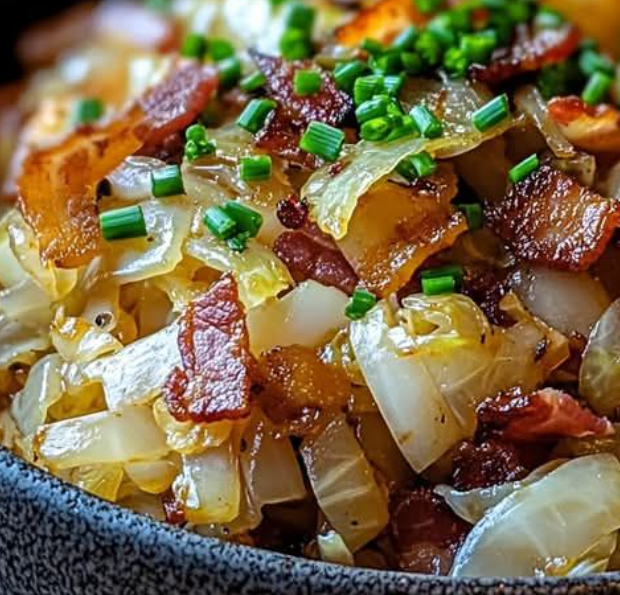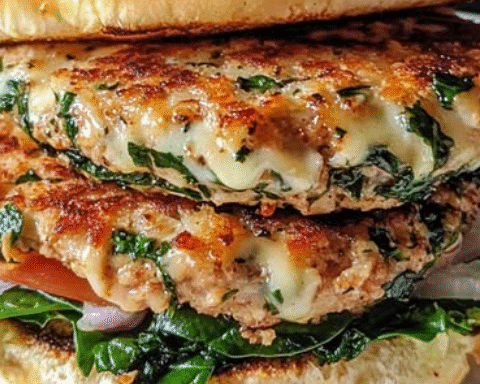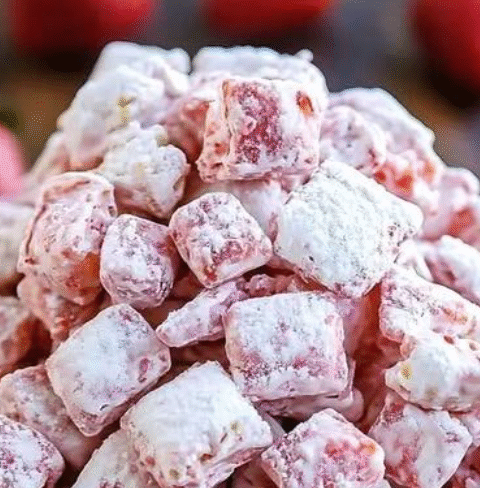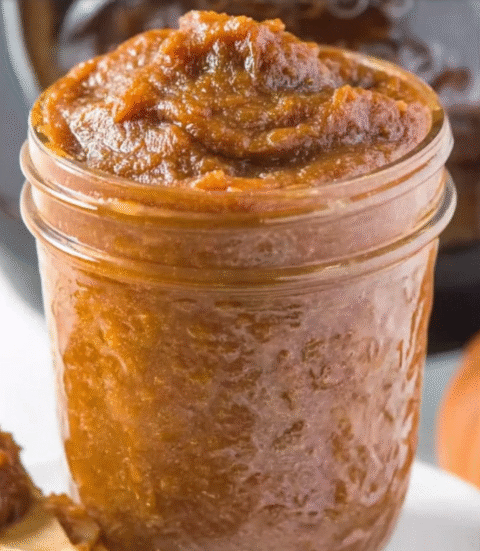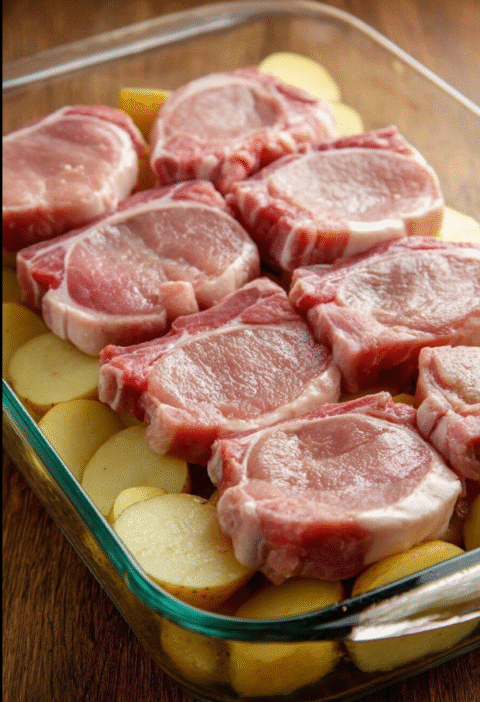Fried Cabbage with Bacon, Onion, and Garlic: Comfort Food Elevated
There’s something deeply satisfying about simple, hearty food that warms your soul. Enter: Fried Cabbage with Bacon, Onion, and Garlic. 🥓🌿 A dish that takes humble cabbage, elevates it with smoky bacon, aromatic onion, and garlicky goodness. It’s quick, flavorful, budget‑friendly, and perfect as a side—or even a main when paired with grains or bread.
Chef Bobby Flay, The Pioneer Woman Ree Drummond, Gordon Ramsay, and Ina Garten weigh in on how to bring this dish to its fullest, while staying mindful of health, safety, and nutrition. Let’s cook together!
Why You’ll Love This Dish
- Bold layers of flavor: smoky bacon + savory garlic + sweet onion + tender cabbage.
- Minimal ingredients, easy prep—great for weeknights.
- Versatile: hearty side, light main (when served with protein), or even vegetarian adaptation.
- Comforting texture: crisp edges, tender leaves, aromatic juices.
Ingredients & Prep
Ingredients (Serves 4 as a Side)
- 1 small head of cabbage (about 1.5‑2 lbs, ≈ 700‑900 g), chopped
- 4‑6 slices of bacon, chopped (≈ 100‑150 g, depending on thickness)
- 1 medium onion, sliced (≈ 150‑200 g)
- 3‑4 cloves garlic, minced (≈ 10‑15 g)
- Salt & freshly ground black pepper, to taste
Optional Variations & Add‑ins
- Red pepper flakes or sliced chili for heat.
- A splash of apple cider vinegar or lemon juice for brightness.
- Smoked paprika or onion powder to deepen flavor.
- Herbs like thyme, parsley, or fresh chives for garnish.
- Substitute bacon with pancetta, smoked ham, or lean turkey bacon.
- For vegetarian version: omit bacon, use olive oil and substitute with smoked tofu or mushrooms for texture.
Step‑by‑Step Instructions
1. Prepare the Ingredients
Wash the cabbage well; remove the tough outer leaves. Chop the cabbage into bite‑sized pieces or thin strips, depending on your texture preference. Slice the onion, mince the garlic. Chop the bacon into small pieces so it crisps evenly. Mise en place (everything in place) makes cooking smoother.
2. Cook the Bacon
Heat a large skillet (cast iron or heavy stainless works well) over medium heat. Add chopped bacon. Let it render slowly. Cook until bacon is crispy and most of its fat has rendered out. This imparts rich smoky, savory flavor. Remove bacon (but keep the fat/drippings in the skillet). Set bacon aside on a plate lined with paper towel to drain.
3. Sauté Onion & Garlic
Into the bacon drippings, add sliced onion. Cook over medium heat, stirring occasionally, until the onion softens and becomes translucent, about 4‑5 minutes. Avoid browning too early; you want sweetness more than burnt edges. Then add minced garlic, and cook for another 1 minute or so, stirring constantly so the garlic doesn’t burn (burnt garlic can get bitter).
4. Add the Cabbage
Add chopped cabbage to the skillet. Stir well so cabbage mixes with bacon drippings, onion, and garlic. Season with a moderate amount of salt and freshly ground black pepper. Because bacon is salty, you may want to go light on the salt initially, then adjust. Cook over medium heat, stirring occasionally, until cabbage wilts and becomes tender. This may take about 8‑12 minutes, depending on how thick you chopped it. For more browning (and flavor), increase heat slightly toward the end, stirring more frequently.
5. Reunite & Finish
Once cabbage is tender and nicely browned in spots, return the crispy bacon to the skillet. Stir it all together so bacon gets warmed and the flavors meld. Taste, adjust seasoning (more pepper, more salt if needed). Optional: a splash of apple cider vinegar or lemon juice adds acidity to cut richness.
6. Serve Warm
Serve immediately—this dish is best warm when the textures and flavors are vivid. Garnish with fresh herbs if desired.
Tips & Insights from the Chefs
Chef Gordon Ramsay on Texture & Heat Control
- Aim for contrast: some pieces browned, some tender. Too low heat and you’ll just steam cabbage; too high and you risk burning onion or garlic.
- Use a skillet large enough so the cabbage isn’t overcrowded—overcrowding causes steaming instead of frying.
Chef Bobby Flay on Smoky Depth & Spice
- Smoke some paprika into the bacon or add a chipotle‑in‑adobo for smoky heat.
- Finish with red pepper flakes for a kick.
The Pioneer Woman (Ree Drummond) on Comfort Appeal
- Let the bacon get nicely crisp so its texture contrasts with soft cabbage.
- Serve it with mashed potatoes or cornbread for real comfort food vibes.
Ina Garten on Balancing Flavors & Presentation
- Brighten the dish with fresh herbs (parsley, chives) or a dusting of freshly ground black pepper just before serving.
- Use a wide shallow skillet so cabbage cooks evenly and picks up color.
Health & Safety Tips 🛡️
Selecting & Handling Ingredients Safely
- Choose fresh cabbage: firm, crisp leaves; no sliminess or large dark spots.
- Store bacon properly in the refrigerator; check use‑by date.
- Wash cabbage under running water; pat dry to avoid extra moisture.
- Use a clean cutting board (especially separate for meat like bacon) to avoid cross‑contamination.
Cooking & Fire Safety
- Use moderate heat at first; bacon fat can splatter, so stand back slightly and use a splatter guard if available.
- Be cautious when adding cabbage; water content might cause sizzling in hot bacon drippings.
- Have oven mitts on hand; skillet handles get hot.
Nutrition Considerations
- Bacon is high in saturated fat and sodium—consider using less, or leaner bacon, or mix with a smoked lean meat alternative.
- Onions and garlic add antioxidants and health benefits; they also contribute flavor so you can reduce added salt.
- If you want to lighten up: drain excess fat after bacon cooking, or blot some with paper towel; use half bacon + half lean protein; or finish with a lemon juice to brighten and reduce heavy feel.
Nutrition & Health Benefits
This table gives estimates per serving (¼ of the recipe as a side), using typical ingredients. Nutrition will vary depending on exact bacon type, cabbage size, oil or added ingredients.
| Nutrient | Estimated Amount per Serving | Health Benefit |
|---|---|---|
| Calories | ≈ 220‑260 kcal | Provides energy; moderate for a side dish. |
| Protein | ~ 8‑10 g | From bacon; helps repair tissue and support satiety. |
| Fat (total) | ≈ 18‑22 g | Bacon contributes saturated fat; some monounsaturated from cooking fats. |
| Saturated Fat | ≈ 6‑8 g | Keep moderation; excess saturated fat linked to cardiovascular risks. |
| Carbohydrates | ~ 8‑10 g | Cabbage and onion provide complex carbs and fiber. |
| Fiber | ~ 2‑3 g | Supports digestion; helps you feel full. |
| Sodium | ≈ 600‑800 mg | From bacon and salt; watch if you are salt‑sensitive. Use lower‑salt options where possible. |
| Vitamin C | ≈ 40‑50 mg | Cabbage is rich in vitamin C; supports immune function and skin health. |
| Vitamin K | ≈ 60‑80 µg | Important for bone health and blood clotting. |
| Antioxidants (e.g. from garlic/onion) | Variable | May help reduce inflammation and support heart health. |
Why This Dish Works: Flavor Chemistry & Technique
- Maillard reaction: The browning of bacon and the slight caramelization of onions bring deep, savory flavor.
- Garlic timing: Adding garlic after the onion allows the onion to sweeten without burning the garlic, preserving garlic’s flavor without bitterness.
- Moisture management: Cabbage has high water content; frying in bacon fat allows some moisture to evaporate and some fat to sauté the edges, giving contrast of texture.
- Salt balance: Bacon is salty; proper seasoning and tasting prevents over‑salting.
Serving Suggestions & Pairings
- Serve alongside roasted chicken, grilled pork chops, or baked fish.
- Pair with mashed potatoes, cornbread, or crusty bread to soak up flavorful drippings.
- Serve with a side of fresh salad or lightly dressed greens to balance richness.
- Leftovers are great—reheat gently; the bacon and cabbage continue developing flavor overnight.
Internal Links & Further Reading
For more comfort food & vegetable‑rich recipes or flavor‑boosting tips, check out these related articles on FreshTonerHungar:
- Healthy Vegetable Sides — discover more ways to make veggies the star.
- Comfort Food Recipes — hearty, satisfying dishes for any mood.
- Allium Flavor Guide: Garlic & Onion Tips — get tips for perfect onion & garlic flavors.
Frequently Asked Questions (FAQs)
- Can I make this dish vegetarian?
Yes! Replace bacon with smoked tofu cubes, mushrooms, or even a plant‑based bacon alternative. Use vegetable oil or a plant‑based fat to sauté instead of bacon drippings. Smoke or liquid smoke adds similar smoky flavor. - What’s the best type of cabbage?
Green cabbage works well because it holds up during cooking. Savoy cabbage can add texture. Red cabbage adds color but may take longer to cook and bleed color. Choose moderately firm heads without blemishes. - How do I avoid soggy cabbage?
Don’t overcrowd the pan—give cabbage space so moisture can escape. Cook over medium to medium‑high heat toward the end to evaporate excess water. You can drain off some rendered bacon fat if too much accumulates. - Can I prepare this ahead of time?
Yes. You can chop cabbage and onion ahead (store separately in fridge). Cook bacon ahead, then recombine when cooking. Fully cooked leftovers store well for 2‑3 days; reheat gently in skillet to refresh texture. - What seasoning variations work best?
Try paprika (sweet or smoked), caraway seeds, crushed red pepper, or even cumin seeds. Herbs like thyme or rosemary can add aroma. Finish with acidity like vinegar or lemon juice for balance. - Is this dish good for meal prep?
Definitely. Makes good leftovers, reheats well. It pairs nicely with grains (rice, quinoa) or beans for protein. Just reheat in a skillet to retain texture over microwaving. - How to reduce sodium?
Use a leaner bacon or one labeled “lower sodium,” use less added salt, rinse bacon a bit before cooking (if extremely salty), or balance with acid (vinegar, lemon) and herbs to reduce your reliance on salt for taste. - Can I add other vegetables?
Yes! Carrots, bell peppers, or mushrooms can be added. Add harder vegetables earlier so they cook through. Softer ones (like bell peppers) toward the end so they retain texture. - How long will leftovers last?
Store in an airtight container in refrigerator for about 2‑3 days. For best flavor and texture, reheat in a skillet over medium heat rather than the microwave. - Can I freeze it?
Freezing is less ideal because cabbage texture degrades, but it’s possible. Portion and freeze. Thaw overnight, then reheat gently in skillet. Texture will soften more than fresh‑cooked.
Chef’s Final Thoughts
Chef Gordon Ramsay says, “Hue and texture—don’t rush the cabbage; let it cook so you get that sweet edge caramelization without burning the garlic.”
Chef Bobby Flay adds, “Smoke and spice are your friends here; the bacon gives you fat for flavor, but it’s contrast—heat, acid, texture—that truly makes it shine.”
The Pioneer Woman (Ree Drummond) reminds us, “Comfort comes from care. Take your time with the onion and bacon; those layers build the heart of this dish.”
Ina Garten’s advice: “Keep things simple but balanced. Fresh herbs, brightness from lemon or vinegar, and letting each element—cabbage, garlic, bacon—have its moment.”
Summary & Recipe at a Glance
- Prep Time: ~ 5‑10 minutes (chopping cabbage, garlic, onion, bacon)
- Cook Time: ~ 15‑20 minutes
- Total Time: ~ 20‑30 minutes
- Servings: 4 as a side dish
- Flavor Profile: Smoky, savory, slightly sweet, garlicky, rich with bacon
Try It Now!
Gather a crisp head of cabbage, bacon, onion, and garlic. Let the pan sizzle. Let the garlic fragrant. Let the cabbage wilt with smoky drippings. Serve warm, with a squeeze of lemon or splash of vinegar if you like. You’ll have a side dish that’s both nostalgic and deeply satisfying. Let me know how it turns out—and any tweaks you made! 😊
